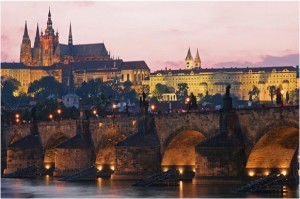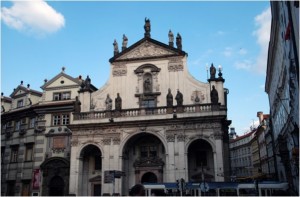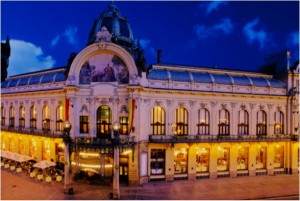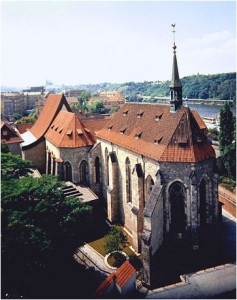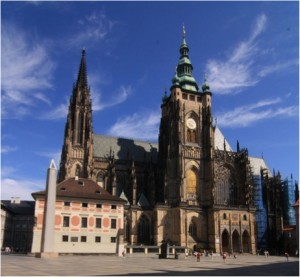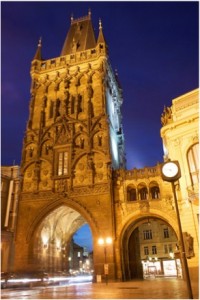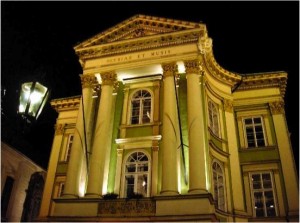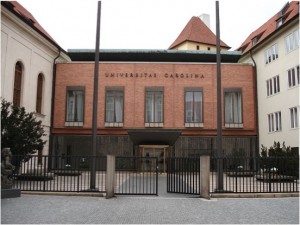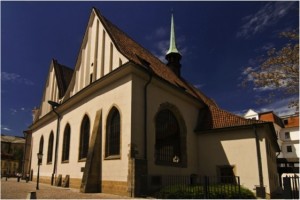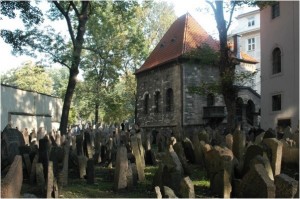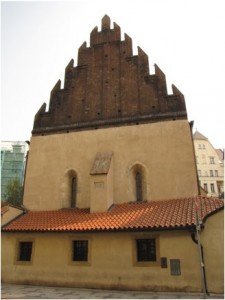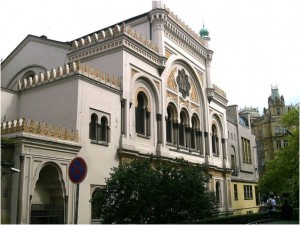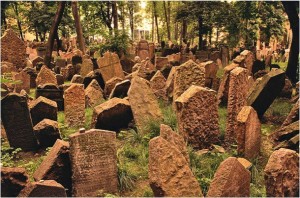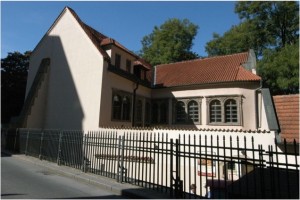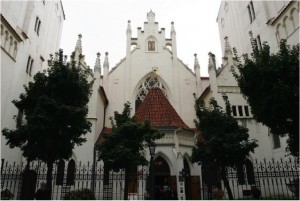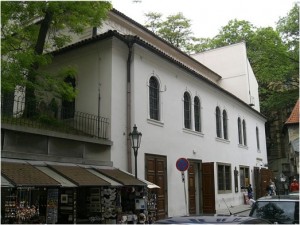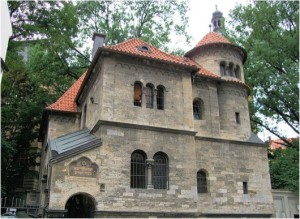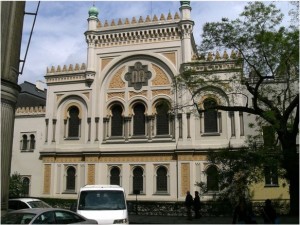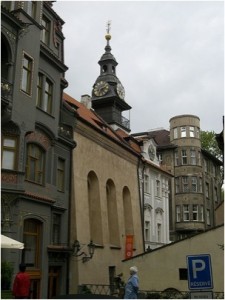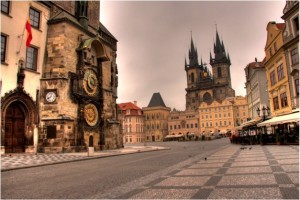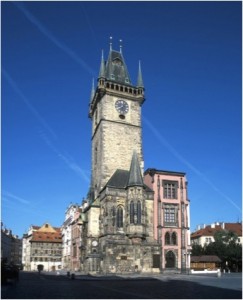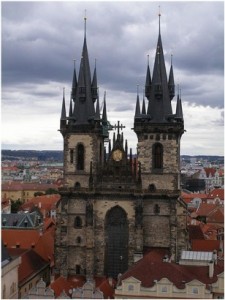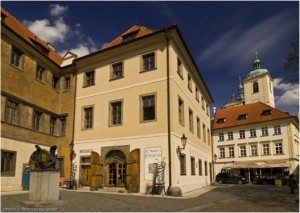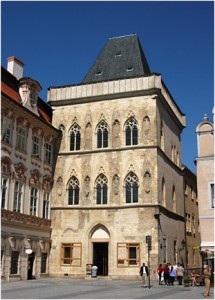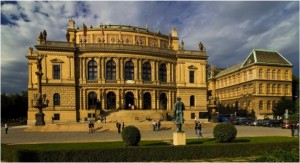 |
|
|||||
|
||||||
Places to visit... |
Old TownMentioned in 1091, it is the oldest of the towns of Prague gained the privileges of a town in the 13th century. However, its name dates back to the 14th century when the New Town was founded. The center of the Old Town has always been the Old Town Square dominated by the Church of Our Lady of Týn and the Town Hall. Karlův most (Charles Bridge) On the other side of the Charles Bridge you will find the Old Town Bridge Tower – the most beautiful Gothic tower in Central Europe, built in 1357 together with the Charles Bridge as the fortification tower as well as the arch of triumph at the Coronation Path of Czech kings. The rich sculpture decoration at the East facade of the tower corresponds with its aims. Inside the tower there are precious exhibits from the Prague Metropolitan Museum collection called the Music of Tower Galleries. Clementinum A former Jesuit college, the building dates from the mid-17th century. It now houses the National Library of the Czech Republic and the State Technical Library. Obecní dům (The Municipal House) An Art Noveau building constructed in 1905 – 1911 (A. Balsánek, O. Polivka) on the spot of the former kings court, a seat of the kings of Bohemia from the end of the 14th century till 1438. The rich interieor and exterior decoration is work of A. Mucha, M. Švabinský, J. V. Myslbek, etc. The monumental Smetana concert hall forms the center of the building being the place of the International Music Festival Prazske Jaro (Prague Spring), other concerts and important social events. kostel sv. Anežky (Convent of St. Agnes of Bohemia) An ensemble of ecclesiastical and residential buildings founded by the King Wenceslas II in 1234. There is an exhibition from the National Gallery and a concert hall. See Galleries. Královská cesta (The Royal Mile) A unique complex of architectonic and historic memories, connecting today’s center of the town (Powder Tower via Celetná Street, Old Town Square, Karlova Street, Charles Bridge, Mostecká and Neruda Streets) with the entrance gate of Prague Castle. In the past, this route was followed by coronation processions and delegations from foreign countries. Prašná brána (Powder Tower) A Gothic building from 1475 constructed by Matthias Rejsek, and once probably used to store gunpowder. Modified in 1875-86. Stavovské divadlo (The Estate Theatre) Opened in 1783 as the Nostic Theatre. The premiere of Mozart’s opera Don Giovanni was given here on October 29, 1787. From 1799 the theatre belonged to the Czech Estates. On December 21, 1834, the song ‘Kde domov můj’ (Where is my home) which later became the Czech national anthem was presentated on this stage for the first time. Today drama, opera and ballet are performed here. Karolinum (Carolinum) The original Charles University building, established in 1348. A Gothic bay chapel of 1370 was rebuilt in Baroque style in 1718. At present, Charles University graduation ceremonies take place there. There is a gallery on the ground-floor. Betlémská kaple (Bethlehem Chapel) Originally a Gothic chapel dating from 1391. The famous religious reformer Master Jan Hus preached there. Completely damaged, the building was reconstructed in 1950-53 from old engravings and pictures (architect J. Fragner). Židovské Město pražské – pražské ghetto (Prague Jewish Town – Prague Ghetto) It dates back to the 13th century but its present appearance is mainly the result of a vast redevelopment action undertaken between 1893 – 1913. Only a few most significant buildings were saved, the living testimony of the history of Prague Jews which lasted for many centuries. Yet these buildings form the best present complex of Jewish historical monuments in the whole Europe. Six synagogues remain from this old settlement which includes the Jewish Town Hall and the Old Jewish Cemetery – the most remarkable in Europe. Except the Old-New Synagogue they are part of the Jewish Museum. Staronová synagoga (Old – New Synagogue) The oldest preserved synagogue in the Central Europe. It was built in the early Gothic style in the late 13th century and richly adorned by stonework. Also the inside furnishings (Gothic wrought-iron grill, wrought chandeliers) are of ancient origin. Up till now it has served as a house of prayer and the main synagogue of the Prague Jewish community. Židovské muzeum (Jewish Museum) The Jewish Museum founded in 1906 is the largest of its kind in Europe and contains a huge collection of sacred Jewish artefacts. Starý židovský hřbitov (Old Jewish Cemetery) Established in the mid-15th century it served as a burial site till 1787. Among 12 000 Gothic, Renaissance and baroque tombstones are also those of Rabbi Jehuda Low (1609) and Mordechai Maisel (1601). Pinkasova synagoga (Pinkas Synagogue) Permanent exhibition: A memorial to 77,297 victims of the Nazi holocaust. Drawings of children from Terezin concentration camp. Maiselova synagoga (Maisel Synagogue) The neo – Gothic synagogue replaced a Renaissance original built by Maisel and destroyed by fire. Permanent exhibition: History of the Jews in Bohemia and Moravia from the beginning of colonization till the beginning of emancipation. Klausová synagoga (Klaus Synagogue) Baroque building near the cemetery entrance. Permanent exhibition: Jewish customs and traditions. Obřadní síň (Ceremonial Hall) Permanent exhibition: Jewish customs and traditions. The Flow of Life. Španělská synagoga (Spanish Synagogue) Named after its Moorish interior. Permanent exhibition: History of the Jews in Bohemia and Moravia since their emancipation until now. Vysoká synagoga (High Synagogue) This mid-16th century synagogue is closed to the public. It is called High because the prayer hall is upstairs. Staroměstské náměstí (Old Town Square) The most significant square of historical Prague. It originated in the 12th century and since then witnessed many events. Beside the Old Town Hall and the Church of Our Lady before Tyn the square has several other dominants, the baroque St. Nicholas church, the Stone Bell house – a Gothic city palace from the 14th century, and the Memorial to Master Jan Hus. The very place where the 27 Czech gentlemen were executed on 21 June, 1621, is marked in the square pavement. The Prague meridian can be seen not far from there. Staroměstská radnice (Old Town Hall) Since the 14th century the seat of the Old Town administration. The oldest part of the building with historical halls, a tower, a bay chapel and a rich coat-of-arms decoration dates back to the Gothic period. The tower bears a unique astronomical clock from 1410 which shows the statues of 12 apostles at every hour between 9 AM and 9 PM. Other figures of the Vain Person, the Miser, the Death and the Turk move too. The apostles can be seen well from the chapel; the tower which can be reached by a lift offers a splendid view of the historical center. The sewer network in the Town Hall’s underground may be visited by groups on the basis of preliminary reservation. There is a Tourist Center and the Center of Foreign Language Guides in the building. Kostel Matky Boží před Týnem (Church of Our Lady before Tyn) Second only to St. Vitus’s Cathedral it is the most remarkable Gothic church with Baroque interior in Prague. Contains the tomb of Tycho de Brahe, the famous astronomer. Part of the interior is being renovated at present. Týnský dvůr (Tyn Yard) One of the places of a great historical value. A block of houses among the Týnská, Štupartská and Malá Štupartská streets. It was probably established in the 11th century already. Originally a fortified merchant yard where the duty on goods called Ungelt (the whole area was given this name) was collected. Traces of all important architectural styles that appeared in Prague can be found in Ungelt. The most important building is the Granovsky Palace – one of the best preserved renaissance jewels in Prague. Between the years 1984 and 1996 the whole area was thoroughly renovated. Today it is used as cultural, shopping and administrative center. Dům U Kamenného zvonu (House At the Stone Bell) The most precious “Burgess house” from the Middle Ages. Originally Romanesque, later remodeled in Gothic style a two – storey facade dating from the 14th century, renovated in 1988. Currently it serves as an exhibition and concert hall.
Rudolfinum A Neo Renaissance building constructed in 1876 – 1884 (J. Zitek, J. Schulz), originally designed for a picture gallery, collection of antiquités and concerts. In the years 1918 – 1938 and 1945 – 1946 it housed the National Assembly. The Czech philharmonic Orchestra found its seat there in 1946. The main hall – the Dvorak Hall – is world famous as a place where the Prague Spring music festival concerts take place every year. |
|||||
|
||||||
|
|






